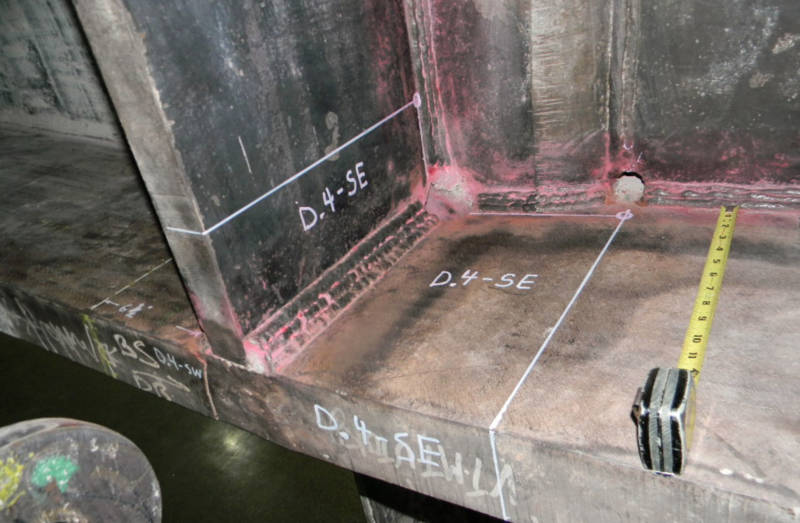"The emergence of this issue kind of puts at stake the credibility of the whole project," Reiskin said. "I think we need some level of review, maybe some level of independent review, of the whole facility. ... I think having that review undertaken will be important to restore the credibility of the facility."
Hursh said AC Transit, which had operated service to the new center for only six weeks before the abrupt Sept. 25 shutdown, needs to be able to reassure its patrons and staff about the facility's safety.
"We're currently carrying over 14,000 people a day" to a temporary terminal at Folsom and Beale streets, he said. "A bus operator is going to have to explain to those 14,000 people why it's safe to come back. That should be the goal of this study -- for us to be able to in plain language explain to the customer and our employees why it's safe and why we're comfortable going back into the facility."
The investigation into the two cracked steel I-beams includes a peer-review panel of engineering experts appointed by the Metropolitan Transportation Commission. Besides helping look for the cause of the fractured steel, the panel will also consult on what steps are necessary to replace or repair the damaged beams and is charged with identifying other structural issues that may need attention.
Board members suggested additional study could come from the American Public Transportation Association, which runs a peer-review program for transit agencies
A materials lab in New York state is currently conducting a battery of tests on samples sawed out of the two fractured metal beams. Agency staff told the board those tests could be completed next week. After they're analyzed and the likely cause of failure identified, project experts and the MTC peer-review team will consult on how to address the problem and design a fix.
That process could continue for weeks, Zabaneh and his staff said. Only when the TJPA understands the scope of the needed repairs will the agency be able to say when the transit center can reopen.
"We will not open the facility without insuring that the structural integrity of the building is sound," Zabaneh said.
The steel issue and other problems with the transit center project recently prompted the San Francisco County Transportation Authority board to halt funding that the joint powers authority needs for its next high-profile project: the long-planned Caltrain extension from its current terminal at Fourth and Townsend streets through downtown to the transit center.
"The organization that developed the Transbay Terminal is out of its depth, out of its league and needs a new governance structure," Supervisor Aaron Peskin said before the vote on the funding. "I think it's time to rethink this to make sure we have an organization that can actually deliver a remarkably complex project."
Under current projections, the downtown extension would cost about $6 billion and be finished in 2026 or 2027.
